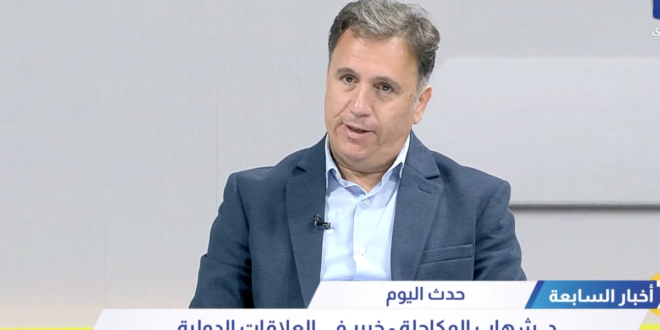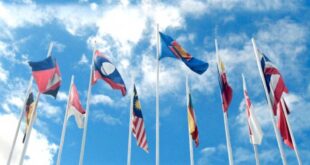Dr. Shehab Al Makahleh
In our interconnected world, the media’s role in shaping public perception cannot be overstated. The coverage of events and incidents by news outlets is a primary source of information for billions of people. However, the media’s portrayal of events is often marred by biases, selective reporting, and sometimes deliberate distortions, which can turn black into white and vice versa. This phenomenon significantly contributes to the proliferation of fake news and propaganda, further complicating the landscape of global information.
Media Bias and Selective Reporting
Media bias occurs when journalists and news organizations present information in a way that reflects their own beliefs, perspectives, or agendas. This bias can manifest in various forms, including the selection of stories, the framing of events, and the language used to describe them. For example, the portrayal of protests in different parts of the world can vary significantly depending on the outlet’s ideological leanings. A protest in a Western country might be framed as a legitimate expression of dissent, while similar actions in a non-Western context could be depicted as unlawful or disruptive.
This selective reporting shapes public opinion and can mislead audiences about the reality of events. For instance, the coverage of the Israeli-Palestinian conflict often reveals stark differences in the portrayal of each side’s actions and motivations, depending on the media outlet’s stance. Such biased reporting not only skews public understanding but also exacerbates tensions and conflicts by perpetuating divisive narratives.
Turning Black into White: The Power of Framing
The way media outlets frame events can significantly influence how audiences interpret them. This framing can effectively turn “black into white,” altering the perceived nature of an event. For example, economic policies implemented by governments may be described as “austerity measures” by some outlets, emphasizing cutbacks and hardship, while others may refer to the same policies as “fiscal responsibility,” highlighting prudent financial management. These contrasting narratives can lead to vastly different public perceptions of the same policies.
Similarly, the media’s portrayal of political figures and parties can vary widely. A leader may be characterized as “strong and decisive” by one media outlet, while another might label the same actions as “authoritarian” or “undemocratic.” This divergence in coverage can polarize public opinion and contribute to the creation of echo chambers, where individuals are only exposed to viewpoints that reinforce their existing beliefs.
The Global Impact of Media Distortion
The implications of biased media coverage extend far beyond national borders. In a globalized world, the portrayal of international events can influence foreign policy, international relations, and even the stability of entire regions. For example, the depiction of the Syrian Civil War has varied greatly, with some media framing it as a fight against a tyrannical regime and others as a battle against terrorism. These differing narratives have impacted international support for various factions and shaped the global community’s response to the conflict.
Moreover, the media’s role in amplifying or downplaying certain events can have dire consequences. The underreporting of humanitarian crises, such as famines or refugee situations, can lead to inadequate international response and aid. Conversely, sensationalizing events can create unnecessary panic or hostility, as seen in the coverage of the COVID-19 pandemic, where misinformation about the virus and vaccines spread alongside factual reporting, sometimes causing public confusion and fear.
The Need for Responsible Journalism
To combat the spread of fake news and the distortion of information, responsible journalism is essential. News organizations must strive to adhere to high ethical standards, ensuring accuracy, fairness, and impartiality in their reporting. This includes providing balanced perspectives on contentious issues, verifying sources, and clearly distinguishing between news and opinion pieces.
Fact-checking is also a critical component of responsible journalism. Media outlets must invest in rigorous fact-checking processes to prevent the dissemination of false information. This is particularly important in the digital age, where the speed of news dissemination often outpaces the ability to verify its accuracy. Fact-checking organizations and initiatives play a vital role in holding media accountable and providing the public with reliable information.
Empowering the Public
In addition to responsible journalism, empowering the public to critically evaluate media content is crucial. Media literacy education can equip individuals with the tools to identify biases, recognize framing techniques, and discern reliable sources from dubious ones. By fostering a more media-literate society, we can reduce the influence of fake news and propaganda, promoting a more informed and discerning public.
Conclusion
The manipulation of information by the media, whether through bias, selective reporting, or deliberate distortion, poses a significant challenge to the integrity of global information systems. It can turn black into white, mislead the public, and influence critical decisions at both the individual and international levels. Addressing this issue requires a concerted effort from all stakeholders, including media organizations, educational institutions, and civil society. By promoting responsible journalism and media literacy, we can create a more resilient information ecosystem that values truth and accountability, ensuring a more informed and cohesive global community.
 Geostrategic Media Political Commentary, Analysis, Security, Defense
Geostrategic Media Political Commentary, Analysis, Security, Defense





